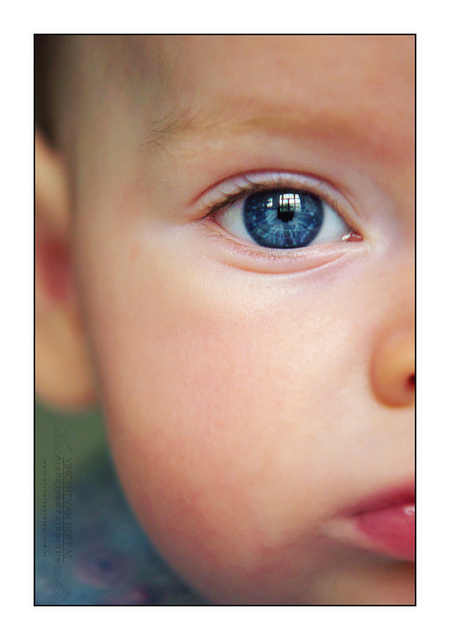 On this year’s summer solstice, the longest day, my daughter is about to reach her own personal equinox. She has lived outside of me for nine and a half months, almost as long as she spent swimming in my belly. The milestone means she now belongs to the world more than to me. In a way, it’s also a shift in season.
On this year’s summer solstice, the longest day, my daughter is about to reach her own personal equinox. She has lived outside of me for nine and a half months, almost as long as she spent swimming in my belly. The milestone means she now belongs to the world more than to me. In a way, it’s also a shift in season.
In her early months my daughter acted like a displaced citizen of my body. She preferred to nap with her ear against my sternum, hearing my heart. But now she squirms and dives to escape my arms. She waves incessantly at strangers. The world has her full attention.
Like a small scientist, she studies her environment. She likes to test gravity by pulling up on the coffee table and then plopping back down. When she’s crawling and hits her head on something, she pauses and then gently does it again, on purpose, feeling the edges where her own body meets the outside. I am studying her, too, to see what rules she has learned about the universe. Does she understand what she sees in a mirror? Why is peekaboo so unfailingly funny?
Charles Darwin also turned a scientist’s eye on one of his baby sons. In 1877 he published “A Biographical Sketch of an Infant” in Scientific American, based on a diary he’d kept 37 years earlier. Darwin had 10 children and, he noted, “excellent opportunities for close observation” of these creatures.
The naturalist tracked how his son developed skills and emotions—pleasure, for example. “When 110 days old, he was exceedingly amused by a pinafore being thrown over his face and then suddenly withdrawn,” Darwin wrote, “and so he was when I suddenly uncovered my own face and approached his.” (See? Unfailing.) “He then uttered a little noise which was an incipient laugh,” Darwin added.
Motor skills, eyesight, fear, affection: Darwin logged milestones in these categories as precisely as he observed barnacles or pigeon feathers. When did his son learn to reason, Darwin asked? At what age did he develop a sense of right and wrong? It was hard to say when the baby first felt anger, though at 10 weeks he “kept a frown on his forehead” while drinking “some rather cold milk.”
Around young Darwin’s own infant equinox, he was starting to understand the laws of the physical world. His father wrote that by nine months, the baby had learned to look behind him for something casting a shadow on the wall in front of him. And he had strong feelings about certain objects. At 11 months old, “if a wrong plaything was given him, he would push it away and beat it.” This reminded Darwin of an angry baby crocodile harmlessly snapping its jaws.
Darwin closely observed how his son developed language. As a newborn, the baby had different cries for different needs. At 12 months he invented a word, mum, which he used to mean “food.” Later, the boy learned real words “at a wonderfully quick rate.”
Darwin was interested in the evolution of humans from what had come before. The boy easily learned to understand short phrases and instructions, Darwin said, which showed a clear difference between his mind and the mind of even “the cleverest full-grown dog.” (Or, he added unnecessarily, a fish.) He was especially struck by how the boy phrased his made-up word mum as a question, his voice rising in pitch at the end. Darwin thought this supported his theory that “before man used articulate language, he uttered notes in a true musical scale,” similar to the singing of gibbons.
Shortly after turning one, Darwin’s son communicated with gestures—for example, handing his father a scrap of paper and pointing to the fire because he wanted to see it burned. My baby does not have access to fire, happily. But my husband and I have started trying to teach her a little sign language. We’ve read that infants can use signs to communicate before they learn to talk, and that this helps them avoid frustration.
Already she’s started imitating the sign for “milk,” which is to squeeze your hand shut like you’re milking a cow (as I explained uncomfortably to her other caretakers). The first time she caught my eye and clenched her dimpled hand, I felt a thrill and fed her right away. She repeated the sign while she was nursing. “Yes! Milk!” I praised her. Then she kept squeezing her free hand while she gobbled noodles in her high chair at dinnertime—and later, when she wasn’t hungry at all. So we’re not celebrating just yet.
Maybe she’s practicing her new skill, or doesn’t understand that it has any meaning. Maybe she understands perfectly well and is just thinking about milk all the time. Or maybe she’s turned the sign into something else—she’s showing us that she’s hungry for everything, that she wants to grab this whole wide world she lives in and make it hers.
_______
Elizabeth Preston is a science journalist and editor living near Boston. Her blog, Inkfish, is published by Discover. Follow her on Twitter @Inkfish.
_______
Photo: Vincent_AF, via Flickr
One thought on “Guest Post: The Baby Equinox and Charles Darwin”
Comments are closed.